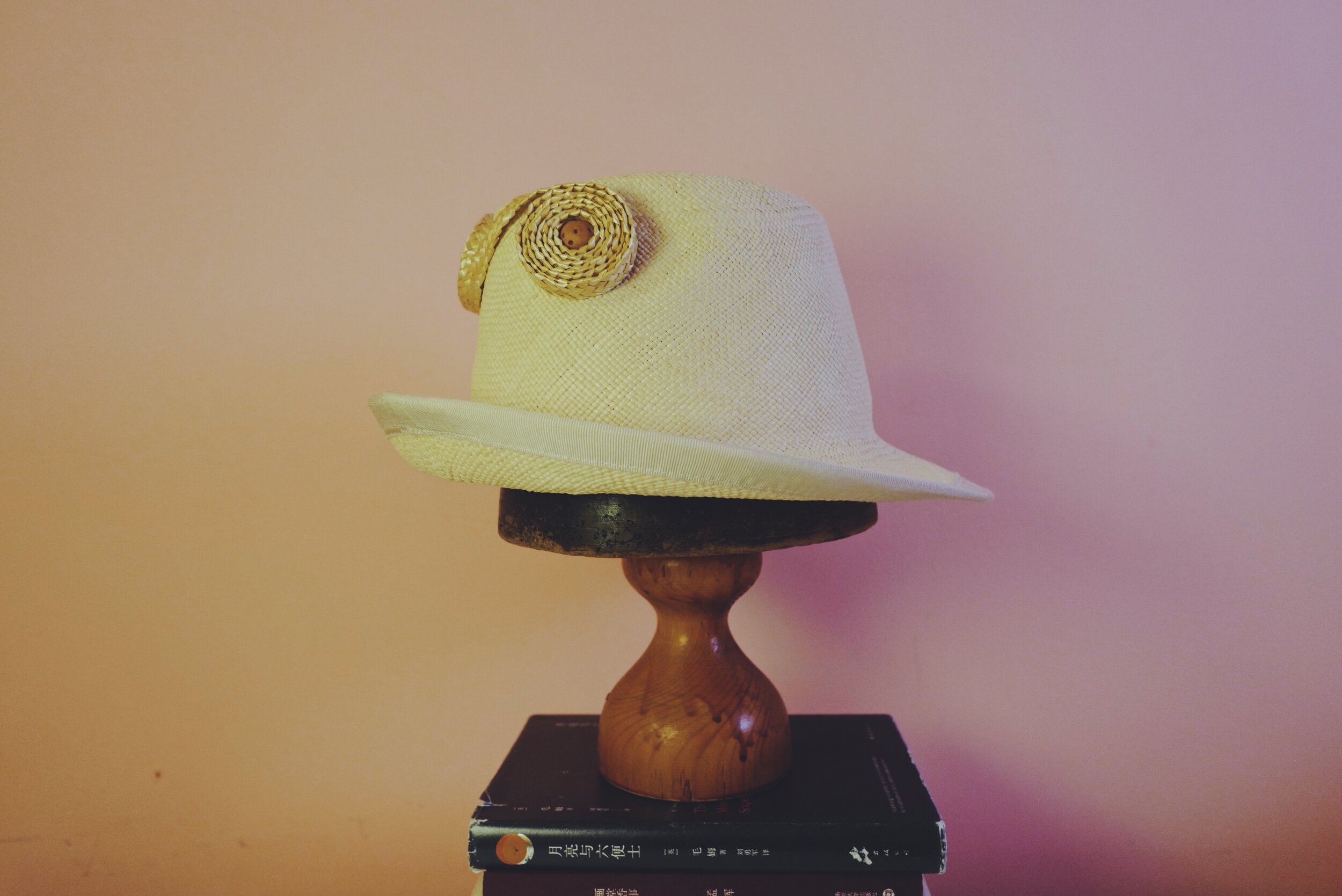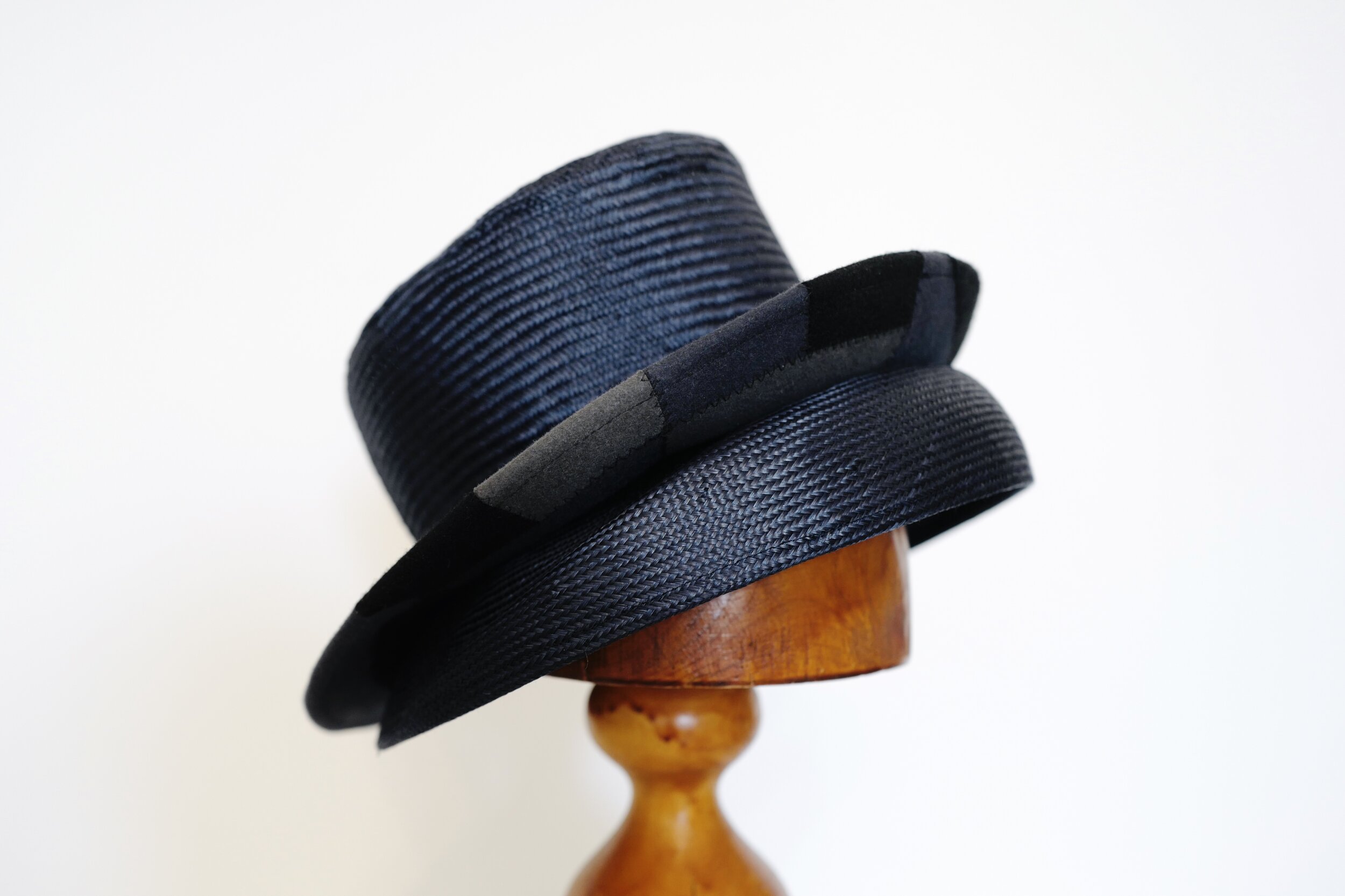Yujie Ding, hat maker
June 3rd 2020
ENG
Yujie Ding, hat maker, graduated in Fashion Design at IUAV University, currently works and lives in Rome.
ITA
Yujie Ding, hat maker, laureata presso lo IUAV di Venezia in Fashion Design, attualmente lavora e vive a Roma.
ENG
LZ: You are trained as a designer and work as a craftswoman, how do these two attitudes coexist and reflect in your creative approach?
YD: I started making hats after graduating in fashion design. I don’t do outsourcing production, and I don’t have any partner or assistant: I’ve always completed the design and production process by myself. You call me a craftswoman, but I might not be convinced…the designer seems a more modern and advanced figure as he usually has a clear concept of what he is doing, while a craftsman "only knows how to do it". However, even after three years of studying in a design school, I don't consider myself a qualified designer. Since I was in school, I have avoided any kind of design practice. I can shamelessly say that I am a designer who doesn't draw, either by hand or digitally. A fashion designer has the ability to develop an entire collection, and I usually don't feel like making a coherent collection of hats with a related narrative. In recent years I have worked with some designers and fashion brands, in this case I am an artisan supplier. According to their needs in terms of mood-boards, sketches, references and color samples, I show them my proposals, tell them what I can do and what I can't. I work with the designer to make a creative product, which makes me enthusiastic, but I don't need to be responsible for the creative part, so I don't have any psychological stress.
I also feel confused when I introduce myself, whether I am a hat designer or a hat maker. I would like to be both.
IT
LZ: Sei designer di formazione e artigiana di professione, come convivono e si riflettono nel tuo approccio alla creazione queste due anime?
YD: Ho iniziato a fare cappelli dopo essermi laureata in fashion design. Non facendo outsourcing, nessun partner o assistente, ho sempre completato da sola i processi di progettazione e produzione. Se mi definisci un’artigiana, potrei non essere convinta, perché il designer sembra una figura più moderna ed avanzata in quanto in genere ha un concetto chiaro di ciò che sta facendo, mentre un artigiano “sa solo come farlo”. Tuttavia dopo tre anni di studio in una scuola di design, non mi ritengo una designer qualificata. Da quando ero a scuola, ho eluso qualsiasi tipo di pratica di disegno. Posso dire senza vergogna di essere una designer che non disegna né a mano libera né al computer. Un designer di moda ha la capacità di sviluppare un'intera collezione, io di solito non ho voglia di fare una collezione coerente di cappelli con una narrativa correlata. Negli ultimi anni ho lavorato con alcuni designer e marchi di moda, in questo caso sono un fornitore artigianale. In base alle loro esigenze in termini di moodboard, schizzi, riferimenti e campioni colore, mostro loro le mie proposte, dico loro cosa posso fare e cosa non posso fare. Collaboro con il designer per realizzare un prodotto creativo, il che mi rende entusiasta, ma non ho bisogno di essere responsabile della parte creativa, quindi non ho alcuno stress psicologico.
Mi sento pure confusa quando mi presento, se sono una hat designer o una hat maker. Vorrei essere entrambi.
Yujied Hats for Zhuti Pan
ENG
LZ: Does the process of making a hat change depending on the materials used? What materials do you usually work with?
YD: There are many techniques of millinery with different materials. My favourite is lapin felt, a material used exclusively to make hats. Almost all my clients, including fashion designers, ask me this lapin, because it differs from the more common wool felt. It is the best for hat making: the whole production process becomes smoother, and the final product is delicate, light and beautifully shaped. Lapin felt hats can be repeatedly reformed and repaired, even after beeing used for many years.
The main technique used for my hats is "blocking", necessarely followed by stitching. Blocking is probably equivalent to moulage in clothing production. Like many designers who love moulage, sewing for me is a long process with less creativity. Since mine is a "one person sweatshop", I have to border the visor, sew the grosgrain, the ribbon, the bow tie, apply other decorations and the lining. At the same time, watching any Chinese soap drama while working is essential for me.
IT
LZ: Il processo di realizzazione di un cappello cambia a seconda dei materiali che si utilizzano? Tu con quali materiali lavori abitualmente?
YD: Esistono molte tecniche di modisteria con materiali diversi. Il mio preferito è il feltro di lapin, che è un materiale utilizzato esclusivamente per fare i cappelli. Quasi tutti i miei clienti, compresi i designer di moda, me lo chiedono perché si differenzia dal più comune feltro di lana. In termini di materiali per la produzione di cappelli, il lapin si comporta in modo assolutamente migliore: l'intero processo di produzione diventa più “liscio”, il prodotto finale è delicato, leggero, con una bella forma. I cappelli in feltro di lapin possono essere ripetutamente riformati e riparati anche dopo essere stati usati per molti anni.
La tecnica principale utilizzata per i miei cappelli è il "blocking" (modellatura), seguito dalla "cucitura". Il "blocking" equivale probabilmente al moulage nella produzione d’abbigliamento. Come molti designer che amano il moulage, cucire per me è un processo lungo con meno creatività. Dal momento che il mio è un "one person sweatshop", devo bordare la visiera, cucire il grosgrain, il nastro, il papillon, altre decorazioni e la fodera. Allo stesso tempo, guardare una qualunque soap drama cinese mentre lavoro è essenziale per me.
ENG
LZ: Your hats are "Made in Italy by a Chinese", is there a message behind your definition?
YD: Those who desire "Made in Italy" products, would like to "witness the event” where Italian artisans work with savoir faire on refined objects, just like the solid omnichannel marketing narratives about excellent craftsmanship. Especially Chinese consumers hardly accept that the real producer of their 5000 euro bag is a Chinese immigrant. Although there have been many articles and academic studies on this subject, fashion brands still do not tell these facts openly. As a result, the "made by Chinese" in the Italian fashion industry is known but not declared.
Instead of passively waiting to be "revealed", I want to take the initiative and declare that my small workshop is a Chinese workshop located in Italy, so that my clients do not have a romanticised expectation about the production process of my hats. They will have no psychological gap when they "know the truth".
IT
LZ: I tuoi cappelli sono “Made in Italy by a Chinese”, c’è un messaggio sotteso a questa tua definizione?
YD: Coloro che hanno il desiderio del “Made in Italy” vorrebbero “vedere” la scena in cui l'artigiano italiano lavora con savoir faire su oggetti raffinati, proprio come raccontano le solide narrazioni di marketing omnichannel sull’ eccellente artigianato. Soprattutto i consumatori cinesi difficilmente accettano che il vero produttore della loro borsa da 5000 euro sia un immigrato cinese. Sebbene ci siano stati molti articoli e studi accademici su questo tema, i marchi di moda non raccontano ancora apertamente tali fatti. Di conseguenza, il "made by Chinese" nell'industria della moda italiana è noto, ma ancora invisibile.
Invece di aspettare passivamente di essere "rivelato", voglio prendere l'iniziativa e dichiarare che il mio piccolo workshop è un workshop cinese situato in Italia, in modo che i miei clienti non abbiano un’aspettativa romanticizzata sul processo di produzione dei miei cappelli. Non avranno alcun gap psicologico quando "conosceranno la verità".










